Day 1 :
Keynote Forum
Geoffrey Mitchell
Centre for Rapid and Sustainable Product Development, Portugal
Keynote: Circular seas-new challenges for biopolymers
Time : 09:00 - 09:30

Biography:
Professor Mitchell carried out his doctoral studies at the University of Cambridge and postdoctoral studies at Hokkiado University Japan, and the University of Cambridge. He is currently Vice-Director of the Centre for Rapid and Sustainable Product Development, Institute Polytechnic of Leiria, Marinha Grande, Portugal a centre of excellence in the field of additive manufacturing, tissue engineering and regenerative medicine. He is also Emeritus Professor at the University of Reading UK. He has published over 300 papers in international journals and 6 books. He is an editorial board member of several international journals.
Abstract:
Keynote Forum
Prof Mikael Hedenqvist
KTH Royal Institute of Technology in Stockholm, Sweden
Keynote: Protein Plastics
Time : 09:30 - 10:00

Biography:
Mikael S. Hedenqvist is professor and leading the division of Polymeric Materials at KTH Royal Institute of Technology, Stockholm, Sweden. He received his Ph.D. from KTH 1995 and was a postdoctoral scholar at the University of Utah, USA, in the group of Professor Richard Boyd. He is editor of Polymer Testing. His research involves both petroleum- and biobased polymers (including starch and protein materials) and the following topics; electrical and transport properties, polymer stability and degradation, packagings, composites, foams, modelling at different length scales and polymer processing.
Abstract:
In this presentation the possibilities and challenges associated with the use of protein-based materials in applications where petroleum-based plastics are used today. The processability of protein-based materials using techniques currently used for petroleum-based plastics (e.g. injection moulding, compression moulding and extrusion) will be discussed as well as the properties of the final products. Examples will be given for proteins (one-component materials and blends) that we work on or have worked on. These include wheat gluten, rape-seed, whey and potato protein materials. Also the processing and properties of non-food proteins will be presented. The protein structure and the physical and chemical properties of the protein materials are assessed using e.g. SE-HPLC, DSC, TGA, infrared spectroscopy and mechanical tests. The properties of films, plates, 3D-shaped items and foams will be given and discussed. The materials are either rubbery (plasticised) or glassy, showing everything from soft/resilient to stiff behaviour. Some special features, obtained with the use of additives (e.g. biochar, graphene and carbon nanotubes) and/or special processing techniques, are highlighted, such as fire-retardancy, liquid absorption and electric properties. Moisture and microbial resistance, obtained by e.g. coatings and antimicrobial agents, are highlighted and expected life-times in various environments are also discussed. The work have been performed in collaboration with Dep. of Plant Breeding/Dep. of Molecular Sciences/Swedish University of Agricultural Sciences, Rice Bioeconomy, Risø National Laboratory for Sustainable Energy/Technical University of Denmark, MAX IV Laboratory/Lund University, Deutsches Elektronen-Synchrotron/Hamburg, Dep. of Chemistry/Dep. of Materials Science and Engineering/KTH, Centre for Advanced Composite Materials/Dep. of Mechanical Engineering/Dep. of Chemical and Materials Engineering/University of Auckland, Dep. of Mechanical and Aerospace Engineering/Dep. of Chemical Engineering/Monash University.
Keynote Forum
Marcel Van Berkel
Sugar Delta, Netherland
Keynote: The polymerization shared facility accelerating polymer innovation
Time : 10:-10:30
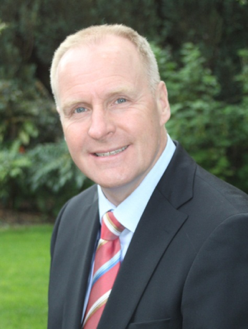
Biography:
Marcel is an accomplished, versatile and passionate Business Executive; driving product innovation in a global science-based market leader and shaping/executing a successful growth strategy of a disruptive, entrepreneurial SME. Commercially agile, boasting an outstanding track record of propelling business operations forward via organic and acquisition activities; collaborating at board level with shareholders, customers and external investors to enable businesses to reach their full potential on a truly global scale. Experience in Chemical Industry, Clean-tech, Renewables and Polymers & Materials.
Marcel van Berkel studied Chemistry and Business Administration in Utrecht, the Netherlands. He worked for more than 30 years for corporate companies like Solvay and DSM, expedite the growth of a start-up in the bio-based chemicals industry successfully works currently as independent consultant. On assignment of the Green Chemistry Campus, Marcel is starting the Polymerization Shared Facility.
Abstract:
The development of new and/or biobased polymers is a long-time and expensive process. The Polymerization Shared Facility is a multi-purpose pilot plant to accelerate the development of innovative (biobased) and drop-in polymer-materials by enabling production on pilot scale for commercial-trials.
It is a Pilot Plant with state-of-the-art industrial equipment, experienced and flexible team serve customers in the field of:
• Polymerization of (Bio)polymers, (bio)Polyesters and (bio)Polyamides
• Depolymerization of waste-plastics into monomers enabling significant contribution to the Circular Economy
The mission of this Polymerization Shared Facility is to accelerate the development of innovative (biobased) and drop-in polymer-materials by enabling production on pilot scale for commercial-trials.
The Polymerization Shared Facility is part of the Biobased Delta. Biobased Delta is the first Public-Private Partnership developing an eco-system for the Circular Bioeconomy, in the South-West Netherlands.
The Biobased Delta focuses on green chemistry in order to reduce CO2 emissions and facilitate the transition to the Circular Bioeconomy. We accelerate the implementation of the Circular Bioeconomy by:
- Flagship projects on the use of carbohydrate feedstock, bio-refinery, biobased aromatics and valorization of lignine
- Enabling an active cooperation between industrial entities like SME’s and multinationals, knowledge institutes and government organisations
- Acquisition of R&D and production facilities
- Creating awareness of and sharing state-of-the-art know-how
- Support engineering phase of new investment projects for 3rd parties
- Stimulate the use of new sustainable energy, products and technologies at end-consumers.
The unique value proposition of the Biobased Delta embraces:
- Large carbohydrate availability with favourable cost position
- Location in reach of 40% of European customers within 200 km
- Top innovation centers in the area for biopolymers, 3D-printing, natural fibres and natural colours
- Open innovation hubs for green chemistry, biotech and pilot plants for monomers & polymers
- Consortium of top SME’s representing all steps in the value chain from feedstock to end-product
- Biomaterials and Biocomposites

Chair
Prof Mikael Hedenqvist
KTH Royal Institute of Technology in Stockholm, Sweden
Session Introduction
Prof Joana Curto
University of Beira Interior, Portugal
Title: Recycling of silicon coated paper and design of new cellulose based materials
Time : 13:35 - 13:55

Biography:
Joana M R Curto has her expertise in the development and optimization of cellulose fibrous materials and biopolymers. She is a Professor in the Chemistry Department at Beira Interior University. She has more than twenty years of experience on research and development of projects in the field of sustainable processes and products. Her method to design polymeric porous materials is based on experimental and computational optimization approach. She has been publishing, coordinates research projects and supervises thesis as a Member of Fibrous Materials and Environmental Technologies Research Unit, in collaboration with other International Research Centers.
Abstract:
An innovative green chemistry approach is used to recycle silicon coated paper and obtain cellulose based materials with industrial applications. The silicon coated paper is used in labeling industry and constitutes a challenge for recycling due to the stability of the siloxane covalent bonding to the OH cellulose ending groups. The silicon coated paper has been successfully processed using a combination of mechanical and chemical processes to obtain recycled cellulose fibers. From this process two types of cellulose fibrous materials were made and tested, depending on their properties, a fibrous pulp material to be integrated in the paper recycling industry and an cellulose based material to be used in civil engineering applications. The coating made from silicone based polymers proved to be very stable and the evaluation of the modifications induced by different combination of unit operation was done using techniques such as scanning electron microscopy, optical microscopy, x-ray dispersive spectroscopy, Fourier transformed infrared attenuated total reflectance spectroscopy and contact angle. The recycled cellulose fibers were used to produce recycled paper, and tensile strength and optical properties were quantified using ISO standards. The recycled pulps were compared with reference Eucalyptus globulus fibers. Using an optimized combination of mechanical and chemical process operations the recycled cellulose fibers obtained presented good mechanical strength with tensile index values for recycled paper of 39,6 Nm/g, in the same range of virgin eucalyptus paper, presenting 42,2 Nm/g. The recycled fibers integration in the paper industry also depends on the paper structure ability to drain water. These step of the formation of paper, because involves an high energy consume, is considered a key process parameter, and has been evaluated by using the Schopper Riegler degree method. The results indicate that 80% of the fibers originating from the recycling process present acceptable values for drainage. The remaining material was processed to be used as a biopolymer material in engineering applications. The results indicate that this material can be molded, its porosity optimized, and different applications can be designed, departing from these recycled cellulose natural fibers.
- Polymer Physics and Chemistry
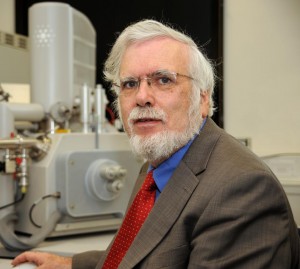
Chair
Prof. Geoffrey Mitchell
Centre for Rapid Product Development, Polytechnic of Leiria, Portugal
Session Introduction
Dr. Khalid Rabaeh
The Hashemite University, Jordan
Title: 3D Optical properties of N-(Hydroxymethyl)acrylamide polymer gel dosimeters for radiotherapy treatment planning system
Time : 12:05 - 12:25
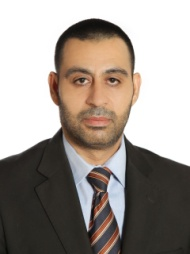
Biography:
Khalid A Raba'eh has received his PhD degree in Applied Radiation from the Putra University (UPM), Malaysia in 2007. Following a PhD, he took up position as a Radiation Physics Researcher at King Abedulaziz City for Science and Technology, Riyadh, Saudi Arabia. He is currently the Head of Medical Imaging Department, Hashemite University, Jordan. His primary research interests are in the field of radiation Chemistry dosimeters for low and high dose applications. He is involved in projects at Biomedical Physics Department, Research Center, King Faisal Specialist Hospital and Research Center, Riyadh, Saudi Arabia. He works on projects related to polymer gel dosimeters for radiotherapy treatment planning systems. He is the Author of more than 30 scientific publications and six patents.
Abstract:
Advanced treatment techniques for cancerous tumors such as intensity modulated radiotherapy (IMRT), brachytherapy, and boron nuclear capture therapy require highly conformal 3D dose distributions. For this purpose, tissue equivalent polymer gels whose nuclear magnetic resonance (NMR) and optical properties change with radiation dose could offer unique advantages for measuring radiation dose distributions in 3D. Radiation-induced polymerization N-(Hydroxymethyl)acrylamide (NHMA) gel dosimeter is introduced in this study for radiotherapy treatment planning. The phantom gels were irradiated to 8 MV photon beam of the CyberKnife robotic system up to 6 Gy. The polymerization of NHMA gels occurs and increases significantly with increasing absorbed dose. Optical computed tomography system was used to measure the 3D optical density of irradiated NHMA polymer gel dosimeters. The 3D dose distributions of irradiated phantom gels were compared to 3D simulated dose distributions of CyberKnife robotic treatment planning system (TPS). 3 mm distance-to-agreement with 3% dose difference was used to evaluate gamma analysis. The results show a very good agreement in terms of gamma pass rate between TPS and gel dosimeter, indicating NHMA gel could be used for 3D dose validation.
- Synthetic polymers, Nanopolymers and Nanotechnology

Chair
Prof Mikael Hedenqvist
KTH Royal Institute of Technology in Stockholm, Sweden
Session Introduction
Dr. Duclerc Parra
Instituto de Pesquisas Energeticas e Nucleares – IPEN, Brazil
Title: Nanocomposites foams of polypropilene modified by ionizing radiation containing CaCo3/ag° nanoparticles of bio-calcium carbonate-study of bactericidal effect
Time : 13:55 - 14:15

Biography:
Dr. Duclerc Parra, Graduated in Chemistry by São Paulo University (1979), Professor of Environmental Chemical Center (CQMA), in IPEN/SP (Nuclear Research Institute) since 2001, specifically in Polymers Laboratory – Master in Organic Chemistry- Natural Products in 1985, Doctor in 1995 with thesis on Stabilization and degradation of rubbers, pos-doctorate in Luminescent Polymers. Actually, researcher and advisor of PhD program, in nuclear modification of polymer for compatibilization , membranes for drug delivery , nanocomposites for health care products and bactericidal foams.
Abstract:
This paper presents a study of high melting strengh polypropylene (HMSPP) foams by gamma irradiation with insertion of silver nanoparticles (AgNPs) adsorbed in carrier of CaCO3 (natural source) aiming bactericidal effect. The use of silver (Ag°) gives important antibacterial property since silver is highly toxic against bacterae. The HMSPP matrix was processed in a twin screw extruder under CO2 atmosphere and polypropylene nanocomposites (HMSPP-AgNC) were obtained in different concentrations of silver. The material was characterized by scanning electron microscopy (SEM), energy dispersive spectroscopy (EDS), field emission scanning electron microscopy (FESEM), X-ray diffraction spectroscopy (XRD), cytotoxicity assay and reduction colony-forming-unit (CFU). The analyzed foams showed spherical clusters and homogeneous regions with good distribution of the silver nanoparticles. Furthermore, the HMSPP@AgNCs foams exhibited a antibacterial efficiency against E. coli and S. aureus due to the presence of the biocidal silver nanoparticles.
- Biopolymers as Materials
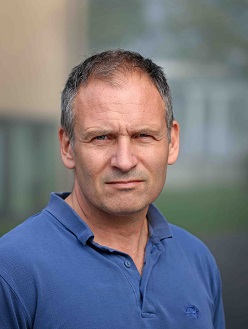
Chair
Prof Mikael Hedenqvist
KTH Royal Institute of Technology in Stockholm, Sweden
Session Introduction
Elizabeth Cardoso
Instituto de Pesquisas Energéticas e Nucleares, Brazil
Title: Influence of particle size of bio-calcium carbonate used as reinforcement of PBAT/PLA bio-based foams compatibilized with ionizing radiation
Time : 14:15 - 14:35

Biography:
Elizabeth Cardoso Graduated in Industrial Engineering by Pontificia Universidade Católica de S. Paulo (1969), graduated in Licensing in Sciences by Faculdade de Filosofoa, Ciencias e Letras de Santos (1972) – Member of Environmental Chemical Center (CQMA), in IPEN/SP (Nuclear Research Institute) since 1998, specifically in Polymers Laboratory – Master in 2009 with Development of Polymeric Foams from PP and HMSPP , Doctor in 2014 with thesis on Development of partially biodegradable foams from natural and synthetic polymers, pos-doctorate in Development of foams based in biodegradable polymers reinforced with micro-loads from renewable origin. Actually, pos-doctorate student in Development of foams based in biodegradable composites reinforced with micro and nano particles from bio-origin, compatibilized with electron beam.
Abstract:
Bio-filler from eggshells as reinforcement of bio-based polymers are based on their principle benefits such as good strength and stiffness besides being an environmental friendly, degradable and renewable material. Eggshell is an agricultural waste largely considered as garbage and discarded mostly because it contributes to pollution. Biodegradable polymers as PLA (poli-lactic acid) and PBAT (butylene adipate co-terephthalate) are thermoplastics which can be processed using most conventional polymer processing methods. PLA is high in strength and modulus (63 MPa and 3.4 GPa, respectively) but brittle (strain at break 3.8%) while PBAT is flexible and tough (strain at break <710%). In order to reduce interfacial tension exhibited by PLA/PBAT blend, compatibilization is fundamental: herein it was used as compatibilizing agent PLA previously e-beam irradiated at 150 kGy: ionizing radiation induces compatibilization by free radicals, improving the dispersion and adhesion of blend phases, without the use of chemical additives and at room temperature. PLA/PBAT, 65/35 blend with bio-filler, from avian eggs, of 38 and 75 µm particle size were prior homogenized in a co-rotating twin-screw extruder and further foamed in a mono-screw extruder, by using CO2 as Physical Blowing Agent (PBA). Characterizations involved: Melt Index, DSC, TGA, FTIR, SEM, XRD and mechanical essays.
Nilay Kahya
Istanbul Technical University, Turkey
Title: Chitosan films for removal of a surfactant from aqueous solution
Time : 14:35 - 14:55

Biography:
Nilay Kahya is a PhD candidate working under the guidance of Prof. F. Bedia Erim Berker. She has completed her MSc degree in Chemistry at ITU Graduate School of Science Engineering and Technology in 2016. Her research fields are mainly related to the applications of biopolymers in drug delivery systems and adsorption fields. She has four publications in Science Citation Index journals.
Abstract:
In recent years, environmental pollution in terms of water is seen obviously a serious and critical issue all around the world. Mainly, pollution originates from surfactants, heavy metals, aromatic molecules and dyes which mixed with water sources. Surfactants mostly come from residual of detergents and they are one of the major pollutants of wastewaters. Surfactants harm aquatic life and causes water pollution. Therefore, it is necessary to remove surfactants from environmental wastewaters. Among surfactant family, sodium dodecyl benzene sulfonate (SDBS) is well known anionic surfactant. Chitosan is a cationic charged polymer when it is dissolved in acidic media. This natural sourced biopolymer was chosen an adsorbent material by means of its biocompatibility and biodegradability. In the present study, a model anionic surfactant (SDBS) was removed from aqueous solutions using cross-linked chitosan films as a nontoxic adsorbent. Sodium sulfate was chosen to cross-link the films to increase the resistance and stability of films in aqueous media. FTIR spectroscopy was used for the characterization of films. The amount of SDBS in aqueous solutions before and after adsorption process was determined by UV spectroscopy at 223 nm wavelength. In order to determine optimum adsorption conditions, the effects of pH, contact time and initial SDBS concentration were investigated. All adsorption experiments were done at 25oC in a temperature controlled water bath shaker. Experimental results were modeled by isotherm and kinetic models.
- Recycling & Waste management of Polymers
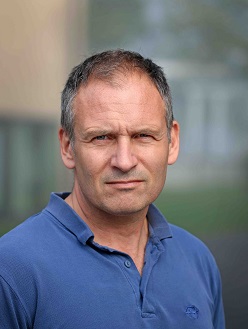
Chair
Prof Mikael Hedenqvist
KTH Royal Institute of Technology in Stockholm, Sweden
Session Introduction
Jakub Fojt
Brno University of Technology, Czech Republic
Title: Determination of biomicroplastic contamination of soil and compost
Time : 15:10 - 15:25

Biography:
Jakub Fojt has studied Analytical Chemistry and Environmental Engineering at Brno University of Technology. He has tried to develop analytical method for capillary electrophoresis. He has initiated experiments with biodegradation of biodegradable bioplastics during his Master’s degree study due to his passion to environmental studies. He continues with this work as a Researcher and PhD student at the same institution.
Abstract:
Mankind is replacing oil-based plastics by so-called biodegradable bioplastics to prevent plastic pollution. However, bioplastics can biodegrade under specific conditions, which are not common in nature. Thus, also bioplastics could potentially become a source of microplastic debris. Unlike in aqueous systems, the soil microplastic contamination is very hard to determine due to matrix complexity and currently, there is still lack of analytical methods to determine easily microplastics coming bioplastics. In fact, the most difficult part of analysis is soil sample pre-treatment and preconcentration or extraction of bioplastics. In this work, we present data on use of evolved gas analysis (EGA, combination of thermal degradation and mass spectrometry). It allows a direct analysis of microplastic debris and its application was successfully demonstrated for determination oil-based microplastics. In this work, as a model bioplastic was used polyhydroxybutyrate (PHB). We demonstrate a quick and easy EGA method for determination of PHB microplastics in soil and other solid matrix with possible differentiation of anthropogenic PHB from natural PHB. In addition, this method could be used for verification of biodegradation tests and contamination evaluation of soil after applying compost containing biodegradable bioplastic.
- Polymer Processing and Modelling

Chair
Prof Mikael Hedenqvist
KTH Royal Institute of Technology in Stockholm, Sweden
Session Introduction
Veronika Melcova
Brno University of Technology, Czech Republic
Title: Unexplained effect of commercial stabilizers on poly(3-hydroxybutyrate) during processing
Time : 14:55 - 15:10

Biography:
Veronika Melcova has worked with polyhydroxybutyrate and focused on its chemical modifications, stabilization and reactive processing during master studies at Brno University of Technology. After, Master’s degree she has continued on doctoral studies with the aim to further study the topics of polyhydroxybutyrate thermal degradation and reactive processing with respect to the change in polymer structure and biodegradability.
Abstract:
Poly(3-hydroxybutyrate) (PHB) is a promising polymer from the group of biodegradable polyesters. It is generally known, that it degrades markedly upon heating to temperatures between 170 and 200 °C, which are the typical processing temperatures for PHB. As a result, molecular weight and viscosity of the system drops. As generally accepted by science community, molecular weight is lowered by random scission through cis-elimination mechanism. This reaction leads to the formation of two sub-molecules one with unsaturated crotonate end group and the other with carboxylate end group. This susceptibility to degradation complicates the processing and possible after-use handling of PHB. The effect of stabilizers and antioxidants traditionally used for commercial plastics is not clearly stated in the literature. The purpose of this work is to study the effect of selected commercial stabilizers based on phenolic stabilizer (Irganox 1010) or phosphites (Irgafos 168) on melt properties of PHB. Moreover, oligomeric carbodiimide with commercial name Raschig 9000 was used as a positive control which is proven to react with PHB. Stabilized samples and unstabilized reference material were subjected to the total of five extrusion cycles. The effect of processing on melt properties was studied by means of melt volume rate. The results clearly show that these stabilizers do not prevent thermal degradation of polyhydroxybutyrate. Moreover, after the third extrusion cycle, the effect of selected additives seems to be rather probe grading.
- Polymers Application in Medicine, Health, Biotechnology and others
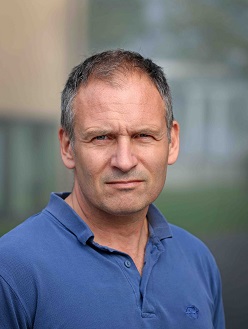
Chair
Prof Mikael Hedenqvist
KTH Royal Institute of Technology in Stockholm, Sweden
Session Introduction
Antonia Link
University Hospital Tuebingen, Germany
Title: Development of a Novel Polymer-Based mRNA Coating for Surgical Suture to Enhance Wound Healing
Time : 15:25 - 15:40

Biography:
Antonia Link has completed her Graduation with a MSc degree in Pharmaceutical Sciences from Tuebingen University in 2018. Currently, she’s pursuing her PhD in the Department of Thoracic and Cardiovascular Surgery at Tuebingen University Hospital. She has her expertise on the in vitro generation and of messengerRNA and it’s safe and efficient delivery into eukaryotic cells with the aim to improve medical conditions caused by protein deficiency.
Abstract:
The rising incidence of adiposity and type II diabetes as well as the proceeding population aging made the development of a therapeutic strategy to improve wound healing an increasingly important medical task: To cope with the resulting burdens like the increasing prevalence of badly healing wounds new strategies to achieve rapid and complete wound healing must now be developed. This study aims to present a novel approach in the development of bioactive suture material consisting of a messenger RNA (mRNA)-bearing poly (lactide-co-glycolide acid) (PLGA) coating on surgical suture which supports wound regeneration by specific transfection of cells in the wound area. The evaluation of the polymer-based transfection reagent Viromer RED has shown that it is suitable for the transfection of eukaryotic cells: The mRNA gets properly complexed, taken up into the cells and gets translated into a functional protein. Furthermore, the mRNA-PLGA coating induces the expression of the keratinocyte growth factor (KGF) in a keratinocyte cell line although KGF is not expressed by these cells under physiological conditions. By inducing such, wound healing can be stimulated through the differentiation and proliferation of epithelial cells and the additional anti-apoptotic effect. Moreover, transfection via surgical sutures coated with mRNA does not affect the cell viability and a proinflammatory reaction in the transfected cells is not induced. These properties make the mRNA-PLGA coating very attractive for the in vivo application. For the future, this could mean that through the use of mRNA-coated sutures in surgical wound closure, cells in the wound area can be transfected directly, thus accelerating and improving wound healing.
- Biopolymers for Tissue Engineering and Regenerative Medicine
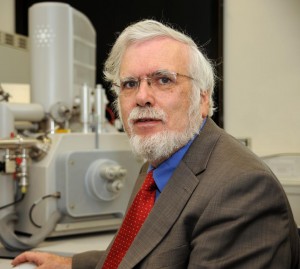
Chair
Prof. Geoffrey Mitchell
Centre for Rapid Product Development, Polytechnic of Leiria, Portugal
Session Introduction
Lei Yang
Liaoning Shihua University, China
Title: Culture and harvest of mesenchymal stem cells on temperature-responsive glass sphere based carriers
Time : 11:05 - 11:25
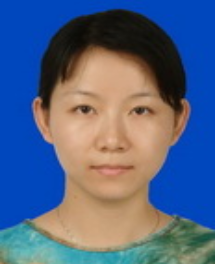
Biography:
Lei Yang engages in the preparation, characterization and biomedical application of smart materials. She creates a preparation strategy of smart copolymer films: polymerization-coating two-step film fabrication. This approach combines smart polymers with any substrates containing hydroxyl groups regardless of shape and size, expanding the applications of smart materials. Furthermore, she invents a bottom-spray fluidized bed reactor, and utilizes bottom-spray coating technology and preparation strategy of smart planar films to produce intelligent tridimensional carriers. She uses the two-and three-dimensional smart substrates to culture adherent stem cells. It provides new ideas for development of culture and harvest system for in vitro culture of stem cells
Abstract:
It is urgent to preserve cell stemness and exploit appropriate techniques of large-scale expansion for in vitro cultivation of stem cells. The development of temperature-responsive tridimensional carriers is expectedly helpful to solve the above problems and provides a large number of high-quality seed cells for biomedical fields. Based on the preparation strategy of thermo-sensitive planar films and bottom-spray coating technology, the thermo-sensitive glass sphere based carriers were fabricated in this study. Firstly, random block copolymers bearing N-isopropylacrylamide, hydroxypropyl methacrylate and 3-trimethoxysilypropyl methacrylate were synthesized by free radical polymerization. The copolymer solution was then uniformly sprayed on the surfaces of glass spheres via a self-made bottom spray fluidized bed reactor, followed by thermal annealing, so as to form the glass-copolymer composite carriers. The composition and surface morphology were preliminarily determined to investigate the coating effect of the smart copolymers on the surfaces of glass spheres. Afterwards, bone marrow mesenchymal stem cells (BMMSCs) were cultured on the thermo-sensitive carriers, and cell attachment and detachment were controlled by means of temperature changes. The effects of cooling treatment and enzymatic hydrolysis on harvested cells were also compared. The results showed that the thermo-sensitive materials could be evenly coated on the surfaces of glass spheres through fluidized bed reactor, and BMMSCs cultured and recovered from the thermo-sensitive carriers could maintain higher stem cell characteristics. This study provides a new idea for the development of culture and harvest system for in vitro amplification of stem cells and has high clinical application value.
- Biodegradable Polymers
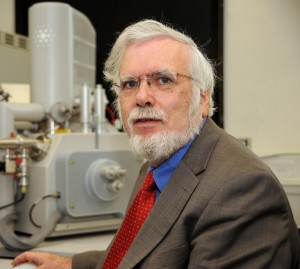
Chair
Prof. Geoffrey Mitchell
Centre for Rapid Product Development, Polytechnic of Leiria, Portugal
Session Introduction
Keane LIU Yaohui
Technological and Higher Education Institute of Hong Kong, Hong Kong
Title: Study of Synthesis of Biodegradable Plastics from Alkaline Fermented Excessive Activated Sludge
Time : 11:25 -11:45

Biography:
Yao-Hui Liu has completed his PhD from The Hong Kong Polytechnic University. He is serving as an Assistant Professor at the Technological and Higher Education Institute of Hong Kong (THEi). He holds over 30 publications in international journals and has been taking cares of over six government and institution funded research projects in Hong Kong with the overall funding scheme reaching 5M HK$. He also severs as a Manager for educational sector for the Waste and Resource Centre in the institute. He is Member in International Association for Hydro-Environment Engineering and Research Hong Kong Chapter (IAHR-HK).
Abstract:
The environmental problems associated with plastics have become increasingly severe in recent years. Technologically and economically feasible solutions are in urgent need in order to ensure sustainable development in the plastic industry. Polyhydroxyalkanoates (PHAs) are a family of specialized polyesters of hydroxyalkanoates (HAs) and can be completely degraded in natural environment. They can be synthesized naturally or under artificially controlled processes. The barrier of limiting the application of PHAs is the high production cost. From years of study, PHAs are proofed to be able to be accumulated within the bacterial cells in activated sludge and the production yield had been greatly improved under the optimized Carbon to Nitrogen (C:N) Ratio and Carbon to Phosphorus (C:P) ratio. Therefore, PHAs synthesis is able to combine with wastewater treatment. However, high carbon source is still required for a higher production yield to offer substrate pressure for PHAs accumulation. On other hand, wastewater treatment plants produce large amount of excessive activated sludge (EAS) to send to landfill sites. This study aims to investigate the PHAs synthesis of PHAs from the fermented EAS via ferrous activated persulfate oxidation method and analyze the composition of the PHAs under various fermented sludge and wastewater. EAS samples were digested with combination of potassium monopersulfate, potassium bisulfate and potassium sulfate and ferrous sulfate to obtain the optimal concentration based on the digestion of EPS and intracellular substances. The optimized digested sludge was served as carbon source together with raw sewage for PHAs production. The ratio of Hydroxybutyrate (HB) to Hydroxybutyrate (HV) was investigated to reveal the relation with the digested sludge dosage. The outcomes of this study provide fruitful solutions to reduce the production cost of PHAs and maximize the reuse of EAS in wastewater treatment process
Prof Maurizia Seggiani
University of Pisa, Italy
Title: Raw protein hydrolysates from tanning industry in blends with Polybutylene succinate adipate (PBSA) for agricultural applications
Time : 13:15 - 13:35

Biography:
Maurizia Seggiani is a Full Professor of Principles of Chemistry for Applied Technologies at the University of Pisa, Italy. Her research activities are focused on analysis/optimization of chemical processes regarding the waste management (treatment/recovery/valorization of industrial solid/liquid/gaseous effluents), biomass gasification, development and application of solid adsorbents for carbon capture at high temperature and also, recently, development of thermoplastic biodegradable/compostable composites for applications in agriculture/marine environments. In the last years, she has been coordinator of research projects concerning the development, processing and validation of bio-composites based on PCL, PHAs and PBSA and industrial by products (collagen hydrolysate) and natural waste fibers for different applications.
Abstract:
In this study, thermoplastic blends based on poly (butylene succinate-co-adipate) (PBSA) and different raw hydrolyzed collagens (HCs), byproducts of the tannery industry, were investigated for the production of biodegradable items for applications in agriculture. The used HCs were obtained by alkaline (HCa) and enzymatic (HCe) hydrolysis of the solid wastes generated during the phase of shaving in the tanning process. PBSA/HC blends, containing 5-20 wt% of HC, were produced by melting extrusion and characterized in terms of processability by blow film extrusion/injection molding and thermal/rheological properties. In view of their potential use in agriculture, the ultimate aerobic biodegradability of films (thickness 300 micron) was evaluated under controlled composting conditions, according to the UNI EN ISO 14855-1; dog-bone specimens, produced by injection molding, were also subjected to a disintegration test carried out in compost under curing at room temperature, according to the UNI EN 14045. The blown films, produced up to 20 wt% of HCa, resulted flexible with satisfactory tensile properties and excellent tear resistance, due to its good compatibility with the polymeric matrix and plasticizing effect. While, the HCe behaved as filler, due to the poor interfacial matrix/HC interactions with consequent continuous decrease of the tensile properties with increasing HCe loading. All the blends up to 20 wt.% HCa and HCe resulted suitable for the injection molding obtaining molded specimens with good tensile properties, in particular those containing HCa. Both HCs improved the biodegradation rate of the blends studied, with even higher rates than cellulose. The results obtained encourage the use of the raw collagen hydrolysates derived from the tannery industry in the production of thermoplastic blends to obtain compostable/biodegradable films or molded products with N-fertilizing properties for applications in agriculture (mulch) and plant nurseries.
- Green Composites in Biopolymers
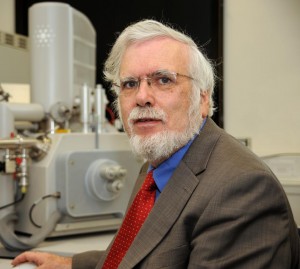
Chair
Prof. Geoffrey Mitchell
Centre for Rapid Product Development, Polytechnic of Leiria, Portugal
Session Introduction
Manisara Phiriyawirut
King Mongkut's University of Technology Thonburi, Thailand
Title: Effect of silane coupling agent on properties of laminar crosslinked tapioca starch composite foam with corn husk
Time : 11:45 - 12:05

Biography:
Manisara Phiriyawirut has her expertise in prepared and characterized biopolymer and bio-related polymer products such as composite foam, composite and blend film, electrospun nanofiber mats for use in packaging or medical/cosmetic related products.
Abstract:
Laminar crosslinked starch composite foams were prepared from glyoxal crosslink-tapioca starch and used corn husks as reinforcement which formed by compression molding. Effect of silane coupling agent on properties of laminar crosslinked tapioca starch composite foam were investigated. Corn husk were treated with silane coupling agents, tetraethoxy silane (TEOS) at difference content (2%, 5% and 10%). It was found that there was no effect of silane treatments on water resistance and foam morphology of starch composite foams. However, from SEM micrographs show less interfacial space between starch and silane treated cornhusk than untreated corn husk starch composite foams. As increasing TEOS content, impact strength and flexural strength of the composite foams were increased due to interfacial adhesion between starch and corn husk were improved by action of TEOS.
Zulfiyya Musazade Mehrab
Azerbaijan State University of Oil and Industry, Azerbaijan
Title: The composition filled in with almond and nut shell
Time : 15:40 - 15:55

Biography:
Zulfiyya Musazade Mehrab is a PhD student at Azerbaijan State University of Oil and Industry, Department of Organic substances and technology of high molecules compounds, Faculty of Chemical Technology. She is in the position of Senior Laboratory Technician at SOCAR Polymer. She has published more than four papers in reputed journals.
Abstract:
This study investigated the mechanical, chemical structure and thermal properties of the biopolymer composition. The components used in the preparation are biopolymer sample of almond shell as filler. The phenol-formaldehyde oligomer was modified with monometilaniline. Modified resol type phenol-formaldehyde oligomer used as a liaison. The main parameters of the obtained oligomer have been studied. For comparison, the main indices of the unmodified oligomer have been researched. An environmentally friendly coating was obtained as binder and almond shell as filler. Thermal and mechanical indices of many bioplastics have similar, eventually even higher consumer properties in comparison with the ones traditionally obtained from thermoplastic products. In these terms bio crumbling polymers are more suitable: the resources necessary for their production and renovation are more efficient. It should also be noted that the high cost price of the material may be temporary, as far as the production of biopolymers is not mass and the value of bioplastics will be reduced over time, as a result, they will be affordable for lots of businesses. The main purpose of the presented research is to study almond shell composition as a biopolymer, its physical and mechanical properties and to use it as filler in the preparation of the biocomposition. The disadvantages of phenol formaldehyde oligomer were modified with nitrogen-containing modificator and its main physical-mechanical properties have been studied.
- Natural Polymers

Chair
Prof. Geoffrey Mitchell
Centre for Rapid and Sustainable Product Development, Portugal
Session Introduction
Lydia Heinrich
Fraunhofer WKI Institute for Wood Research, Germany
Title: Covalent incorporation of lignin into polymeric binders: Challenges, property design and applications
Time : 10:45 - 11:05

Biography:
Lydia Heinrich has completed her Graduation from Edinburgh University in 2013 and a PhD on the synthesis and degradation behavior of bio-based coil coatings under the supervision of Prof. Bruno Andrioletti at the University of Lyon. Since 2016, she has been working at the Fraunhofer WKI Institute for Wood Research in Braunschweig, Germany, which specializes in process technology, natural-fiber composites, wood protection and emission control, quality assurance of wood products, recycling procedures and the use of organic building materials and wood in construction. She works as a Project Manager, leading and participating in research projects involving both industrial and academic partners and focusing on bio-based adhesives as well as on applications of the biopolymer lignin in various contexts, such as adhesives, coatings, printing inks and fire retardants.
Abstract:
The biopolymer lignin, recovered as a byproduct from pulp and paper mills in large amounts, consists of a densely connected network of phenolic units and functional groups such as hydroxyl groups, carboxylic acids and aldehydes. This makes its incorporation into polymeric binders desirable both in terms of the valorization of waste materials leading to a more circular economy, and in terms of the novel properties that it can introduce in binders. While lignin has already successfully been used to replace phenol in phenol-formaldehyde resins in various adhesive applications including particle boards, plywood and laminated veneer lumber, its covalent incorporation into other binders not cured through condensation mechanisms remains underexplored. The reason for this lies on one hand in the difficulty of processing lignin, which is a non-melting solid with low solubility in common solvents, and on the other hand in its heterogeneity and multi-functionality, which make it difficult to produce a chemically exactly defined material from it. In this work, lignin was chemically modified with different renewable building blocks, such as succinic acid, 1,2-propanediol and fatty acids, and non-renewable building blocks, such as polyethylene glycol and ε-caprolactone, to give products suitable for use as binders in applications such as adhesives, coatings and printing inks. Different methods are explored that allow the targeting of specific properties, such as the variation of the melting point and viscosity of the binders, as well as the tuning of the polarity to allow formulation in different solvents and for applications that require certain hydrophobicity. Application examples which utilize the specific properties of lignin show that it is a very promising starting material for binder synthesis, and that many different products can be obtained through appropriate chemical modification.
